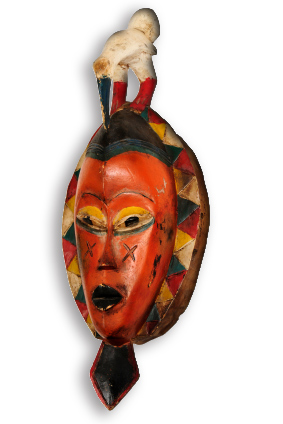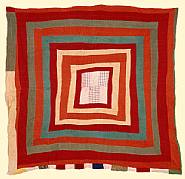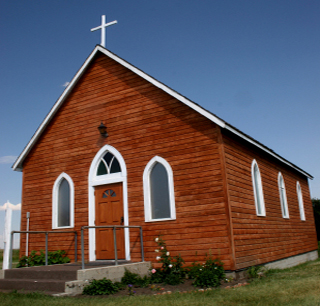|

ARTS DAY
CULTURAL RESOURCES
Sunday, January 25, 2009
Ralph Wheeler, Guest Cultural Resource Commentator
Long time civil rights activist, resident of Oakland, CA
I. Introduction and Historical Overview

A. The Crucifixion of African Culture
According to many American and other western scholars, African slaves, in the main, brought little to no discernible traces of African culture to the Americas or other parts of the western world. Even the noted black sociologist, E. Franklin Frazier, who wrote a definitive book on the historical origins of the black Church in the United States, succumbed to this distorted view of African and early American history. In his book, The Negro Church in America, Frazier indicated:
Although the area in West Africa from which the majority of the slaves
were drawn exhibits a high degree of cultural homogeneity, the capture
of many of the slaves in inter-tribal wars and their selection for the slave
markets tended to reduce to a minimum the possibility of the retention
and the transmission of African culture.1
Frazier gave little scientific support for his sociological conclusions, even though they were set forth as historical facts. He simply argued that: the age of the numerous young enslaved males, who were “poor bearers of the cultural heritage,”2 “the manner in which the slaves were held for the slave ships that transported them to the new world,”3 the “middle passage,”4 and the methods that were used to prepare the slaves for plantation life in the New World all worked to strip the slaves of all of their African cultural influences.5
Professor Frazier, unlike some of his colleagues who took a harsher view on slave transmission of African cultural influences, did recognize the culture and humanity of the African continent. Others were not nearly as kind. Some white scholars denied that the peoples of Africa even possessed a culture. They viewed Africans as heathens. Thus, Christianizing the African slaves justified the system of slavery, including all of its harshness.
To create and sustain this monumental myth, they ignored thousands of years of African art, architecture, linguistics, cultural traditions, music, social cohesion, and African aesthetic expressions. Also overlooked were the African continent’s history of great libraries and universities. Likewise, the traditional systems of African kinship, marriage and social life were ignored. And, in their rush to justify slavery, the enslavers, their supporters and revisionist social scientists fabricated new untruths about African culture and Africa’s lack of contributions to the world family. This was done all in the name of slavery. Unfortunately, many of the myths persist.
Just as Christ was crucified for our sins, African culture was crucified as a justification for the sins of American and western slavery. However, in this instance, African culture and its influences did not die.
The libraries and museums of Europe and the Americas, and the African American experience in this country stand as defining monuments of contradiction to slavery’s fraudulent attempts to obliterate the cultures of Africa and their influences on the Americas and the western world, including their arts.
It is significant that, even while this cache of historical myths was being fabricated, some of its very purveyors were raiding and pillaging Africa and transporting some of the best examples of African arts to western museums, colleges and universities, and the homes and properties of wealthy western citizens and businesses. Like their human counterparts, most of these artifacts have never been returned to their homeland.
B. The Importance of Art

Allie Pettway
Housetop (1970-1975) (The Quilts of Gees Bend)
Imagine if our world, on a daily basis, had no art—no architecture, no dance, no music, no paintings, no movies, no plays, no mimes, no storytelling, no preaching, no writings, no theater, no sacred art, no visual art, no craftsmanship, no oratorical presentations, no quilts, no sculptures, no gardens of beauty, no folk art, no museums, no operas or operettas, no musicals, no fairy tales, or any other kind of art!
Life would be dreary and almost unbearable, but not impossible. As did our ancestors, we would be forced to create our own art.
Relying upon their African cultural backgrounds while forced to live in a new land that was fraught with incomprehensible obstacles and brutality, our ancestors created work songs, play songs, praise songs, blues songs, birth songs, death songs, marriage songs, jazz songs, love songs, and songs of every other dimension.
They took pieces of tattered sacks and useless patches of cloth from throwaway garments and sewed quilts of unmatched beauty. They took scraps of wood and discarded pieces of metal and stone and fashioned them into huts, houses, pipes, pots, pans, spoons, toys, and cooking, drinking and eating utensils. They took the skins of cows, goats, sheep, bears, foxes and other animals and made them into banjos, drums, coats, hats, shoes and water basins.
Yes, our ancestors, with no help from anyone but God, took the hairs of dead horses and hogs and sheep, and the feathers of chickens, ducks and birds and stuffed them into handmade ticks of mattresses, cases for pillows, and cushions for pallets and chairs.
They took the innards of pigs, the feet and ears of hogs, the bodies of ‘possums, squirrels, rabbits, raccoons, birds, deer, wild turkeys, the stomachs of cows, and the bounties of their gleanings from fruit trees, nut trees, corn fields, pea, wheat and vegetable fields and collard, turnip, mustard green and salad patches to create a new cuisine called soul food. They took the shells of peanuts, pecans and walnuts and made fires with which to cook and warm their bodies.
In the meantime, similar to the craftsmen mentioned in our lection for today, they carved statutes from wood and stone; wrote letters, poems, novels and short stories; drew architectural plans, pictures and freedom maps; designed and built mansions, municipal buildings, city squares, sewer systems, water works; stained glass windows, furniture, and churches; built buggies, cars, trucks and the White House; extracted paints from the roots and barks of trees, from the leaves of trees, bushes and weeds, and from the soils of the earth, and used them to paint pictures and buildings, and dye clothes, and art pieces. My goodness, what artists!
But not only that, they cleared swamps, hilly areas, delta lands and bottom grounds; and, with their knowledge of art, farming, science, mathematics, and the stars, they planted, harvested and processed cotton, corn, indigo, and tobacco, okra, potatoes, beans, peas, and watermelons, and peanuts, tomatoes and greens of every kind—the riches in which they did not share.
Next, they took their different tongues, traditions and spiritual influences that were divinely imprinted on their DNA and created life, love, families and joy. They created paths to a peace that surpassed all understanding. They created roads to hope and walkways to visions of freedom. They created byways and highways to God:
It’s a highway to heaven, none can walk
up there but the pure and heart. It’s a
highway to heaven, I am walking up the
King’s highway.6
Afterward, they breathed new life into the blues and produced a new child called rhythm and blues; they choreographed ballets, and they wrote and produced plays and moving pictures; they wrote and presented operas, symphonies and festivals; and, they photographed Harlem, Philadelphia, and the rest of Black America.
All of this was and is art—from, of, and by African American people. All of it is important for so many reasons, especially for the transmission of our history as a people. Neither America nor black folk can afford to lose so much richness.
II. Remembrances of Home

Like much of the United States, my home state of Mississippi is a rural state. It is also a poor state. When I was growing up there, my town, Clinton, Mississippi, was racially segregated. Blacks and whites went to separate schools and separate churches. There were no parks on the black side of town. There was one town library; but, until the late nineteen sixties, it was not open to blacks. There were no museums in our town, and there was no public art.
So, as young, black Mississippi children, the art we were exposed to came mostly from: the folk stories that were told to us at home by our parents; the books that we read; radio and television; our school and class visits to museums, war cemeteries and other places of interests; our tours of the State Capitol and the local black college, Jackson State University; and, our churches. In fact, our churches were great sources of art appreciation, education, exposure and expression.
Beginning as small children and continuing throughout high school, we were immersed in Christmas and Easter pageants, plays, oratorical contests, poetry readings, extemporaneous presentations, and musical renditions. As members of the Cradle Roll and Junior Choirs, we were taught and we sang every form of sacred music.
And, on special occasions, we were treated to movies at the Church. The best occasions, however, were when the visiting quartets and choirs came to our church for anniversaries, homecomings, musicals, revivals, and special programs. Negro History Week was celebrated at church and at school. Important Black artists, inventors, politicians, educators, musicians, entertainers, preachers, and civil rights leaders were celebrated.
Each of these experiences, since they were repeated many times throughout my youth, became imbedded in my DNA. There were no stained glass windows in our little Baptist church. There were only two pictures on the Church’s walls—one of the Pastor and the other of a European-looking Jesus figure. I always wondered why we had up the latter picture. Still, this little church, in the central part of the poorest state in the union, gave me a lasting appreciation for the arts, a spiritual foundation for life, and a sense of self that helps me understand that all of life is a gift.
Churches, no matter how small or large, should never underestimate the potential impact their programs, services and other offerings have on their membership and communities, especially the children and youth of the church and community. Arts Day is an opportunity to educate, teach, expose, train, and to allow the membership to express its creative gifts. It is a time to express, through the various forms of art, the real purpose of Christianity:
“You may build great cathedrals large
or small. You can build sky scrapers
grand and tall. You may conquer all
the failures of the past. But only what
you do for Christ will last.”7
III. Opportunity Knocks
The United States of America recently elected its forty-fourth President—Barack Hussein Obama. It was an historic election for several reasons. First and foremost, President Obama is an African American, the first of his race to reach such heights. Second, he was the first sitting senator to be elected President. Third, he was elected President having less than four years of national service. And, fourth, he was elected with the largest popular vote from young people, of all races, of any President in history.
Mr. Obama’s election provides black churches with an unprecedented opportunity to engage their congregants, especially their young congregants, in the creation and making of art relating to the election and governance of an American president. For example, churches can:
- assign its newsletter/newspaper staffers to cover and write
about the Obama administration;
- have their art departments create quilts, painted portraits,
design church fans and Obama T-shirts and other arts and crafts
for church fundraisers;
- have political poetry slams;
- conduct video contests that chronicle the recent presidential
election;
- sponsor a book club reading, using President Obama’s books;
- organize community crews to paint murals in public areas, to
enhance the community and to implement the President’s request
that we all engage in grass roots efforts to benefit communities;
- sponsor debate contests and discuss today’s issues; and
- create a speakers’ bureau to bring in speakers on important local
and national topics.
These are but few ways to engage the community, youth and young adults in creating and participating in the arts life of the church. There are numerous other opportunities. Arts Day can be used to start conversations on these possibilities.
IV. Lest We Forget (Unhealthy Signs)
While the forces of evil who sought to use Christianity to justify the need for African slavery were not able to entirely wipe out the influences of African culture, African Americans should not assume that their culture and institutions cannot be lost. Usually cultures, languages and distinct peoples do not disappear overnight. Similar to global warming, the process is gradual and there are usually signs along the way.
Currently, there are signs that we are losing ground in African American culture development and culture preservation. For example, the art of quilt making, as is done by the black women of Gee’s Bend, Alabama, is all but lost on our younger generations. The skills of this craft are not being systematically passed down to the next generations.
Further, while there is still a strong market for blues music, it is now a genre of black music that is almost largely supported by non-black music patrons. Moreover, there is no longer a strong body of blues music that is being produced by young black artists.
The Negro spirituals, except in February, are seldom heard anymore. These are not healthy signs!
Cultures, languages and people can become extinct. That extinction probably occurs more easily and more quickly when there are no keepers of the culture who systematically and purposefully seek to transmit the culture to new generations.
In our case, slavery, segregation and Jim Crow laws motivated African Americans to create culture, cultivate culture, husband culture, preserve culture, and transmit culture to new generations of African Americans.
Now, however, there appear to be fewer associations and organizations that are systematically involved in the preservation, or even promotion, of African American culture. All of these are signs that African American culture in this country, especially the different African American art forms, may be in trouble. There are signs that acculturation may be winning.
The black church, being one of the strongest institutions in black life, has the power and the means, if it elects, to correct some, if not all, of these potential cultural losses. Historically, the black church has played a major role in the creation and transmission of black culture. From its brush harbor days to it its current mega church days, the black church has been involved in black life. It played major roles during slavery and the Civil Rights era.
Lest we forget, cultures, to thrive, must be preserved. Methodic and purposeful art is a critical element of cultural preservation.
Notes
1. Frazier, Edward Franklin and Charles Eric Lincoln. The Negro Church in America. New York, N.Y: Schocken Books, 1964. p. 1.
2. Ibid., p. 1.
3. Ibid., pp.1-2.
4. Ibid., p. 2.
5. Ibid.
6. Walking Up the King’s Highway. African American Heritage Hymnal. Chicago, IL: GIA Publications, Inc., 2001. #402
7. "Only What You Do For Christ Will Last." African American Heritage Hymnal. #548
|